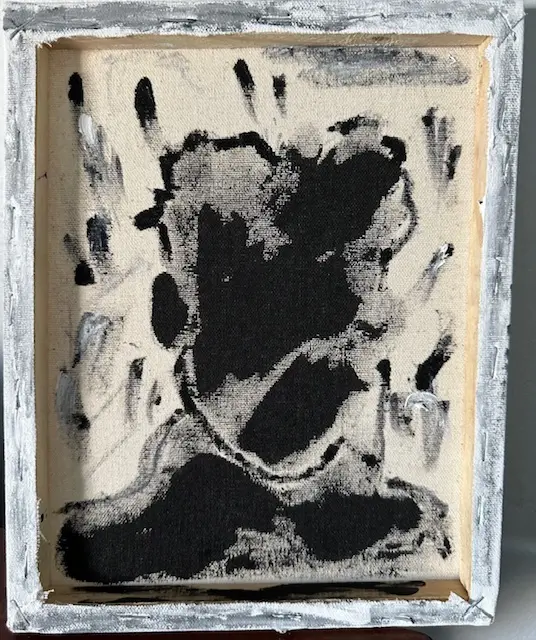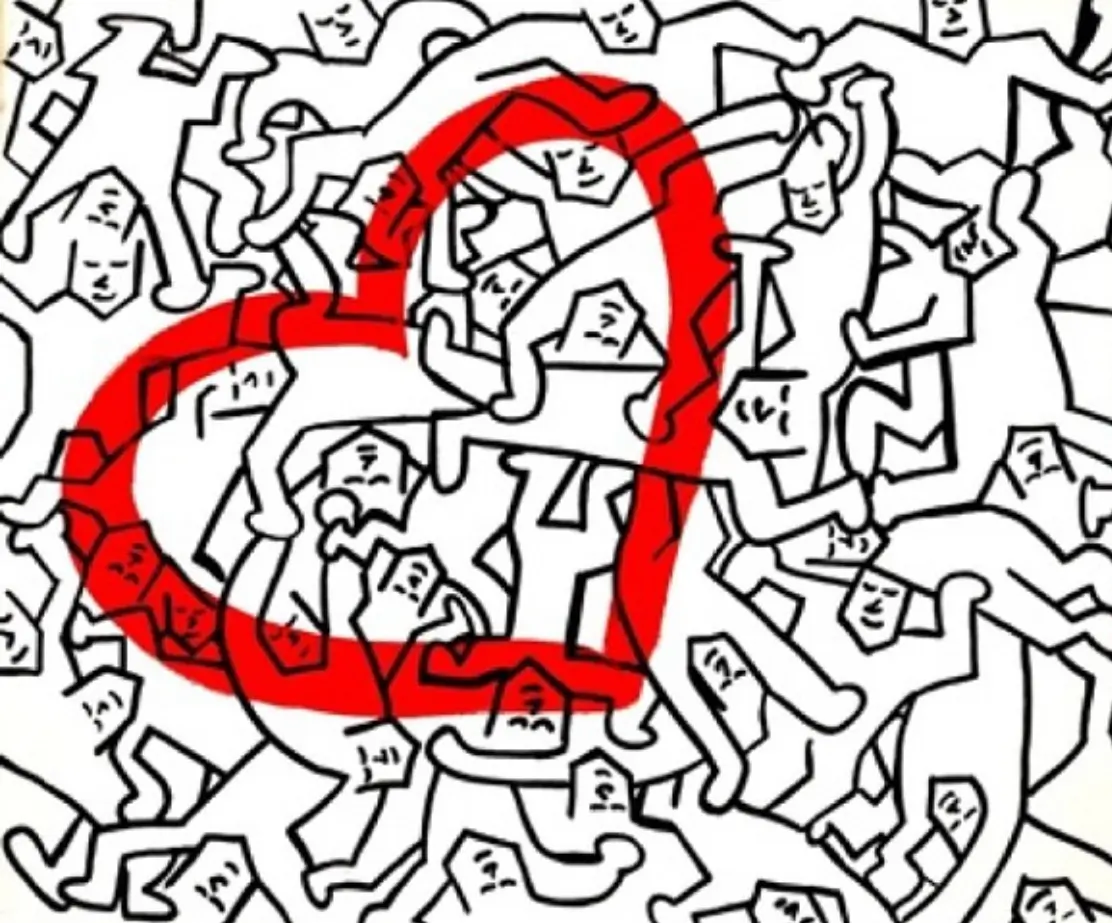In a world where a single piece of art can sell for an astronomical $5 billion, one must wonder: is this art genuinely worth its price, or is there something more sinister at play? I recently watched the episode “Adam Ruins Everything: How The Fine Art Market Is A Scam” and in the episode, he dives deep into the murky waters of the art market, revealing a complex web of price manipulation, exclusivity, and deceit. This article will break down the key points from the episode, providing a comprehensive look at how the fine art market operates and why it may not be as pristine as it appears.
1. The Illusion of Fine Art Value
The Adam Ruins Everything episode opens with a startling revelation: the exorbitant prices in the fine art market aren’t a reflection of the art’s inherent value but are instead the result of a sophisticated price-fixing scheme. Wealthy collectors and influential galleries dictate which pieces are deemed valuable, driving prices up regardless of public opinion. This artificial inflation creates an illusion of value that serves to benefit a select few.
2. The Power of Art Gatekeepers
A small group of galleries and collectors hold immense power in the art world. Their endorsements can skyrocket the price of an artwork, creating a market that thrives on exclusivity and elitism. For instance, an artist’s worth isn’t determined by talent alone but by their ability to navigate and play the gallery game. This tight-knit circle ensures that only a chosen few artists succeed, marginalizing countless others.
3. Clear Art Pricing Strategies
Transparency is a rarity in the fine art market. Major galleries often keep prices secret, allowing them to adjust prices based on the buyer’s perceived status. This lack of transparency means that different buyers might pay vastly different amounts for the same piece of fine art. The episode illustrates this with a humorous yet poignant example where a piece of meat declared as valuable art sees fluctuating prices based on the buyer.
4. Exclusivity Over Art Accessibility
The fine art market thrives on exclusivity. Even prominent figures like actor Daniel Radcliffe have been turned away by galleries seeking “more prestigious collectors.” This strategy enhances the gallery’s brand, making their entire collection more desirable and valuable. It’s a calculated move to maintain a facade of high status and desirability.
5. Art Auction House Tactics
If you think art auctions are fair and democratic, think again. The episode exposes how major auction houses employ tactics like paying people to bid or using “chandelier bidding” to create the illusion of high demand. These practices manipulate prices, benefiting sellers and existing owners of the artist’s work, who see their collections appreciate in value.
6. Art as a Tool for Financial Manipulation
Beyond price manipulation, the fine art market also serves as a playground for financial trickery. Wealthy individuals use art to launder money and dodge taxes. By donating art to museums and hiring appraisers to inflate its value, collectors can significantly reduce their tax liabilities. What seems like a charitable act often doubles as a savvy financial maneuver.
7. The Democratization Myth
The myth that art auctions are accessible to everyone is debunked. Major auction houses, much like galleries, cater to the elite. The episode underscores how even the auction process is rigged, ensuring that only those within the art world’s inner circle benefit.
8. The Impact on Genuine Artists
This exclusive, manipulated market has profound effects on artists outside the elite circle. Despite their talent, many artists struggle to gain recognition or make a living because they don’t have the backing of influential galleries or collectors. The art you might find on the street, though often equally impressive, lacks the prestige that comes from being part of the established fine art world.
9. Defining Fine Art
Ultimately, the definition of fine art is shaped by a handful of wealthy investors. Their investments and endorsements determine what is considered valuable and worth preserving. This dynamic skews the art world’s landscape, favoring financial gain over genuine artistic merit.
10. The Call for Change
The episode concludes with a call to action, urging viewers to recognize the fine art market’s flaws. It’s a system that perpetuates inequality and prioritizes profit over passion. While it may seem daunting to challenge such an entrenched system, awareness is the first step toward change.
Art Brokers and the Art World
“Adam Ruins Everything: How The Fine Art Market Is A Scam” offers a sobering look at the fine art market, revealing it as a carefully constructed façade benefiting a select few. The fine art episode serves as a reminder that behind the glamorous veneer of high-priced art lies a system rife with manipulation, exclusivity, and financial trickery. As viewers, it’s essential to question these establishments for a better and fair art world. The next time you see an artwork with a staggering price tag, remember: its value may be more about who deemed it valuable than the art itself.
Transcript of the video:
It just sold for 5 billion.
Of course it did.
It’s brilliant.
Oh, it’s performance art!
These rich snobs don’t know more about art than you.
They’re mostly just here to make money.
Oh!
We’re told that art like this is so expensive
because it’s the best in the world.
But the fact is, you’re looking at a massive price-fixing scheme
that benefits wealthy collectors and excludes artists like you.
Adam, shush it!
The prices here are high because the art is objectively good.
Nope. The prices are high because
a small group of galleries and collectors decided it was good,
and once they do that,
the price goes up, whether or not anyone else agrees.
You. Paint something.
(gasps)
I declare this valuable art.
Go find more cubed meat.
We’re gonna be rich.
(chuckles)
Well, outsider art is a rich tradition.
How much is this worth?
There’s no way to tell.
Big galleries actually keep their prices a secret
so they can change them depending on who the buyer is.
For you, my friend, ten grand,
and for you, my enemy, 200 grand.
And they do their best to keep out buyers
who are considered elites.
Daniel Radcliffe once tried to buy a fancy painting,
but he was denied when the
dealer told him
he was waiting for a more
prestigious collector.
For you? Not for sale.
Please, sir.
I just want one painting that doesn’t talk to me.
Why are you doing this to me?
Because if the gallery only sells to art world elites,
they’ll be seen as a better brand,
which means all of their other paintings will be worth more.
Ah.
(cash registers dinging)
Hmm. That is shady behavior.
Well, luckily, we outsiders could just go to art auctions.
They’re democratic open markets where anyone can buy.
Sorry, but the major auction houses
are just as rigged as the galleries.
(pounds gavel)
Auctions play all sorts of dirty tricks to drive their prices up,
like straight up paying people to bid.
Let’s start the bidding at $4 million.
Do I see 4 million?
(snoring)
4 million.
And if the bidding is too slow,
auctioneers even use a practice called chandelier bidding.
They just point to a random spot above everyone’s heads
and pretend to see a bid.
And I see 5 million from the bidder in the back,
she’s my girlfriend who you don’t know ’cause she lives in Canada.
Whoop, she’s back across the border, so don’t turn around.
Oh, whatever. Six million.
Why are you okay with this?
Oh, simple, darling.
I own other paintings by this artist,
so when this one sells high,
it increases the value of my entire collection.
Sometimes we even bid anonymously
to drive up the price.
Up next, we have a fine comdiment-based work
from an emerging artist.
Ooh!
I want to bid on this one.
We should all bid on this one.
Let’s start the bidding at $7 million.
This shady market can also be manipulated by crooks who use it
to defraud the government and launder dirty money.
Hello.
I would like to buy a painting from your fine gallery
using legitimate cash moneys.
The red is… paint.
But not all collectors are crooks.
I mean, there’s good people out there
who donate their collections to museums.
Sure, and that seems very charitable,
until you remember that that donation is also a tax write-off.
And here’s where it can get really shady.
The collectors hire their own appraisers
to determine the value of the art they donate,
so they can use it as one big tax dodge.
You owe 40 million in taxes this year.
Ugh!
What if I donate this painting worth 40 million?
At the end of the day, this is what the fine art market is.
A few rich people passing money around.
No! No! Then I want no part of this!
Screw this gallery and screw this opening!
I will make it in the fine art world on my own.
Sorry, that’s not really how it works.
Persephone, this is Allison Schrager.
She’s an economist and journalist at Quartz
who has reported on the fine art market.
Not only is the fine art world manipulated financially,
it’s also extremely exclusive.
Only a small share of artists are allowed to succeed
and only their work is considered valuable.
And those aren’t necessarily the best artists.
Often, they’re just the ones who are best at
marketing themselves and at playing the gallery game.
One art dealer I spoke with even admitted
that the art you buy in the street
is cheaper and often just as good,
it’s just not as prestigious,
so big collectors in museums just aren’t interested in it.
And that means this small group of ultra wealthy investors
ends up defining what fine art is.
So the fine art world is all a lie,
and it’s all about money
and who gets into this stupid snobby club?
Reader Reactions: Insights and Opinions on “Adam Ruins Everything: How The Fine Art Market Is A Scam”
The episode”Adam Ruins Everything: How The Fine Art Market Is A Scam” has sparked a diverse range of reactions from viewers, highlighting various perspectives on the complex and often controversial world of fine art. Here, we delve into some of the most compelling comments and discussions that emerged in response to the episode.
Buying Art for Personal Enjoyment
One of the most upvoted comments, by Jeff, emphasizes the intrinsic value of art:
“This is why you buy art because you actually like it, and it speaks to you. Art should never be an investment.”
This sentiment resonates with many art enthusiasts who believe that art’s true value lies in the emotional and personal connection it creates, rather than its potential as a financial investment. This perspective advocates for a return to appreciating art for its beauty and the way it speaks to the individual, rather than viewing it as a commodity.
The Dark Side of Tax Write-Offs
Another notable comment highlights the ethical concerns surrounding the use of art for tax evasion:
“Chris: The tax write off part is really messed up.”
This reaction underscores the frustration and disbelief at how the wealthy manipulate the art market to avoid paying taxes. The video reveals how collectors can donate art to museums, hiring appraisers to inflate its value, and thus significantly reduce their tax liabilities. This practice, while legal, raises serious ethical questions about fairness and the exploitation of loopholes.
Common Knowledge or Hidden Truth?
Mark questions whether the revelations in the episode are truly groundbreaking:
“Isn’t this common knowledge?”
While some viewers may already be aware of the manipulative practices in the fine art market, the episode still serves as an eye-opener for many. It consolidates scattered information into a cohesive narrative that clearly illustrates the extent of the manipulation and exclusivity within the industry.
Skepticism About Modern Art
Rachel expresses a critical view of modern art:
“All you have to do is look at this fine art and realize it’s just a bunch of nonsense.”
This blunt perspective reflects a common skepticism towards contemporary art, where some feel that the high prices and hype are unjustified. The episode supports this view by revealing how the market often prioritizes financial gain over genuine artistic merit.
Money Laundering and Art
Jason draws a parallel between the episode and discussions about money laundering:
“This reminds me of a discussion about laundering money through art.”
This comparison highlights another dark aspect of the fine art market: its use as a tool for laundering money. The anonymity and high value of art transactions make it an attractive vehicle for illicit financial activities, further complicating the market’s ethical landscape.
Critique of Presentation Style
A more lighthearted critique comes from Miranda:
“The expert at the end seems to be reading off cue cards, which was a bit distracting.”
This comment points out the delivery style of the expert featured in the episode, suggesting that the presentation could have been more engaging. Despite this critique, the expert’s insights into the market’s exclusivity and manipulation remain valuable.
Additional Resources
Jeff recommends supplementary reading:
“I suggest checking out an article on why modern art became less appealing. It gives more context into the art itself.”
This suggestion invites viewers to explore further readings that delve into the evolution and perception of modern art, providing a broader context to the discussion initiated by the episode.
The Exclusive Club of Fine Art
Finally, Chris compares the fine art market to other exclusive luxury goods:
“So, it’s like an exclusive club for the rich, similar to expensive apps and other luxury items.”
This analogy draws attention to the exclusivity and elitism that permeates the fine art market, likening it to other luxury items that are accessible only to the wealthy.
Fine Art Market Scam
The diverse reactions to “Adam Ruins Everything: How The Fine Art Market Is A Scam” highlight the multifaceted nature of the fine art market. From personal enjoyment and ethical concerns to skepticism and critiques of modern art, the episode has sparked a wide-ranging conversation. It underscores the need for greater transparency and inclusivity in the art world, urging both artists and collectors to reassess their roles within this complex and often controversial industry.







